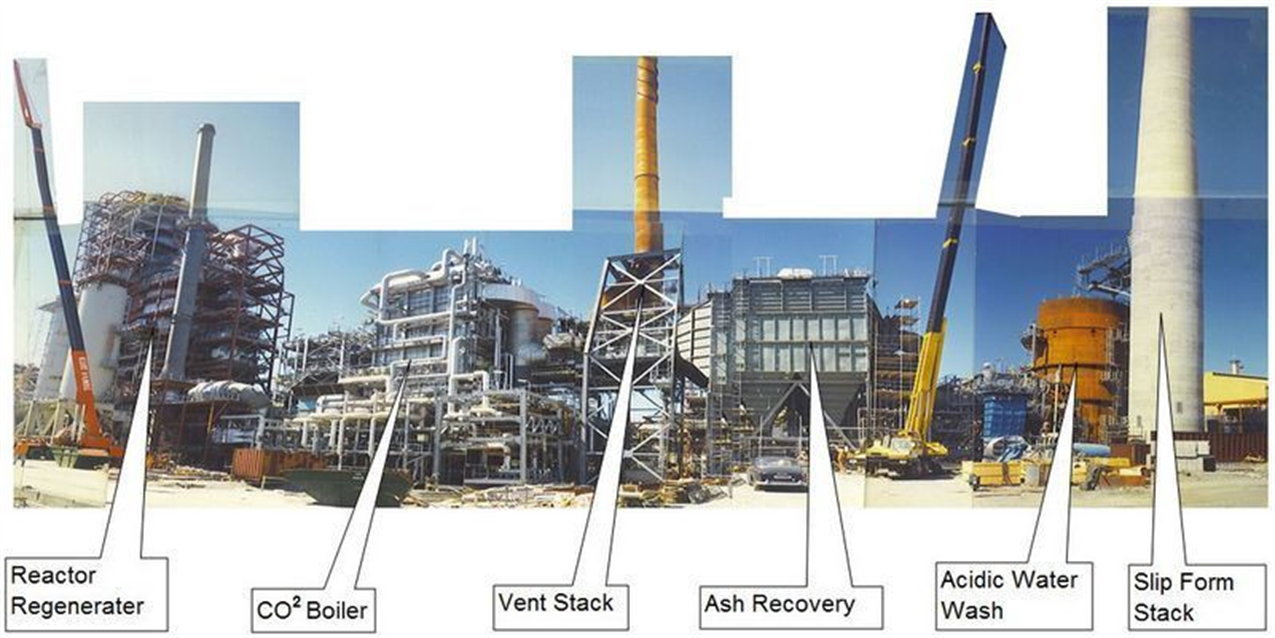
1 Panorama of Boilers & Associated Equipment
MODULEitus
a general understanding of Modules
Index, Section 5, Modules Onshore
C2V
C2V
C2V
C2V Where you see this, Click too View
C2V
Level 1
Level 2
These comments are by way of introduction to Modules Onshore and are followed by a second page of other generalisations on Onshore Modules. There then follows 3 typical Type examples relate to typical; examples.
Modules Onshore often have the reverse of restraints that are common for Offshore, the main one being that lack of Space Offshore is not often a premium happening Onshore. Where lack of Space is a problem then as with Offshore, modularisation becomes more attractive. Two projects (Mongstad and Shell Quest Carbon Project) separated by 3 decades hang on the availability of Space to allow some modularisation. They both rely on space availability to favour some modularisation, both are not heavily modularised with large one piece modules.
The Diagram at the head of this introduction shows a Process Train at Mongstad. Mongstad had some space and bedrock for foundations. The Project Modularisation Study showed that concentration of equipment did not necessarily show an advantage. Concentration puts demands on Classification Uplift as hazards become adjacent or intrude into safer areas. Another aspect is weight or mass.
The result of the Study to Modularise the Mongstad Refinery established just two General Process Modules, Modularised Boilers and Platformer (1000 te mark each). All other equipment was where ever possible dressed and systems of commonality established for design. Apart from the Modules mentioned other assemblies of Machinery of the order of 300 te, and Pipe rack assemblies of 250 te which had a repetitive content were extensively used.
The first items in the figure at the top of the page are a Reactor Regenerator and a Concentration column of the order of 400 te each. Both are substantial in size and weight and in a dressed state provided complications in transportation and installation even without additions to establish a module form. The figure shows twin ringer cranes (outlined in Red,350 te capacity) Lifting and slewing the Reactor into place on a heavy RC structure(outlined in fawn). Such items in Module steel do not show an advantage

Reactor RC Support

Reactor Vessel
Vessel from Ground into Support





